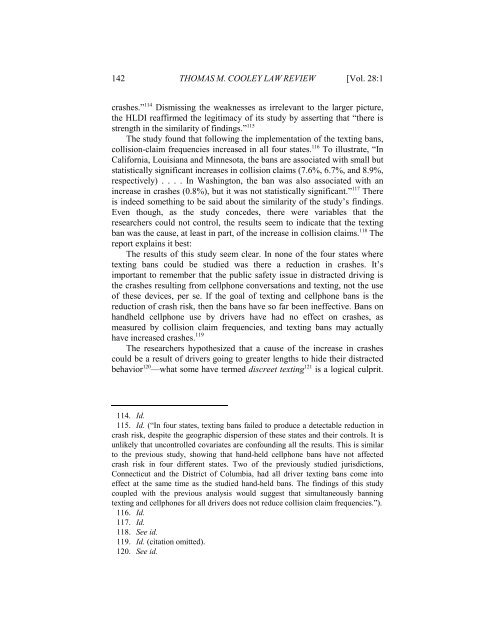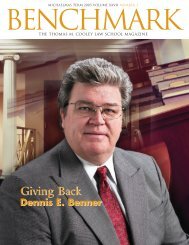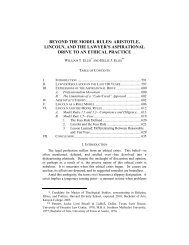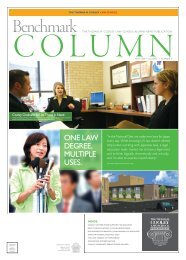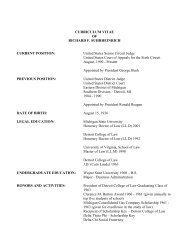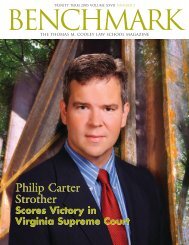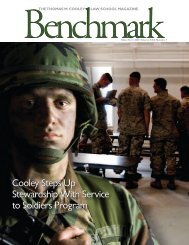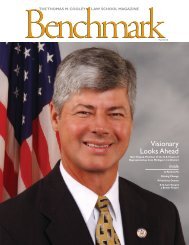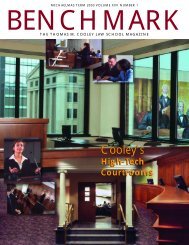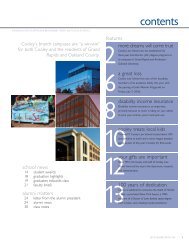Michigan's Texting Ban: One Step Forward, Too Many Steps Back
Michigan's Texting Ban: One Step Forward, Too Many Steps Back
Michigan's Texting Ban: One Step Forward, Too Many Steps Back
- No tags were found...
Create successful ePaper yourself
Turn your PDF publications into a flip-book with our unique Google optimized e-Paper software.
142 THOMAS M. COOLEY LAW REVIEW [Vol. 28:1crashes.” 114 Dismissing the weaknesses as irrelevant to the larger picture,the HLDI reaffirmed the legitimacy of its study by asserting that “there isstrength in the similarity of findings.” 115The study found that following the implementation of the texting bans,collision-claim frequencies increased in all four states. 116 To illustrate, “InCalifornia, Louisiana and Minnesota, the bans are associated with small butstatistically significant increases in collision claims (7.6%, 6.7%, and 8.9%,respectively) . . . . In Washington, the ban was also associated with anincrease in crashes (0.8%), but it was not statistically significant.” 117 Thereis indeed something to be said about the similarity of the study’s findings.Even though, as the study concedes, there were variables that theresearchers could not control, the results seem to indicate that the textingban was the cause, at least in part, of the increase in collision claims. 118 Thereport explains it best:The results of this study seem clear. In none of the four states wheretexting bans could be studied was there a reduction in crashes. It’simportant to remember that the public safety issue in distracted driving isthe crashes resulting from cellphone conversations and texting, not the useof these devices, per se. If the goal of texting and cellphone bans is thereduction of crash risk, then the bans have so far been ineffective. <strong>Ban</strong>s onhandheld cellphone use by drivers have had no effect on crashes, asmeasured by collision claim frequencies, and texting bans may actuallyhave increased crashes. 119The researchers hypothesized that a cause of the increase in crashescould be a result of drivers going to greater lengths to hide their distractedbehavior 120 —what some have termed discreet texting 121 is a logical culprit.114. Id.115. Id. (“In four states, texting bans failed to produce a detectable reduction incrash risk, despite the geographic dispersion of these states and their controls. It isunlikely that uncontrolled covariates are confounding all the results. This is similarto the previous study, showing that hand-held cellphone bans have not affectedcrash risk in four different states. Two of the previously studied jurisdictions,Connecticut and the District of Columbia, had all driver texting bans come intoeffect at the same time as the studied hand-held bans. The findings of this studycoupled with the previous analysis would suggest that simultaneously banningtexting and cellphones for all drivers does not reduce collision claim frequencies.”).116. Id.117. Id.118. See id.119. Id. (citation omitted).120. See id.


